Former teacher, feminist book blogger and parent, Annelies Judson gives an insightful commentary on this batch of very Kiwi picture books.
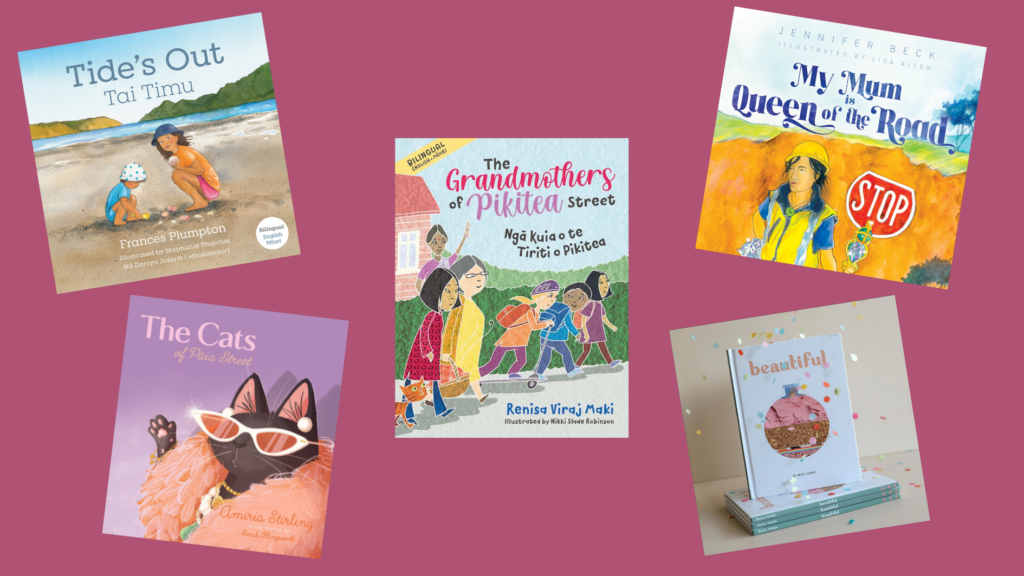
My Mum is the Queen of the Road by Jennifer Beck & Lisa Allen
My Mum Is The Queen Of The Road is a wonderfully written story about a woman who controls the stop-go sign as part of a road work team. The text captures a conversation between two children, where a boy describes his mother as ‘the queen of the road’ and his friend asks questions about what makes his mother a queen. Does she wear a diamond necklace? Do people give her flowers? Both text and illustrations nicely contrast the trappings of royalty with the life of a road worker.
The subtle humour really elevates the book and makes it a great read-again text.
Jennifer Beck (The Bantam and The Soldier, Nobody’s Dog, The Anzac Violin) is the most established of the writers in this group of reviews, and it shows. The writing is perfectly pitched to mimic the conversational style of a preschool child. However there is a cleverness to the text that adds a deeper level for the adult reader, like the father describing the family’s house as their castle, and the final reveal that what makes his mother a queen is the fact that people wave and cheer when she turns her sign to ‘go’, and that “just like a queen, she waves back”. The subtle humour really elevates the book and makes it a great read-again text.
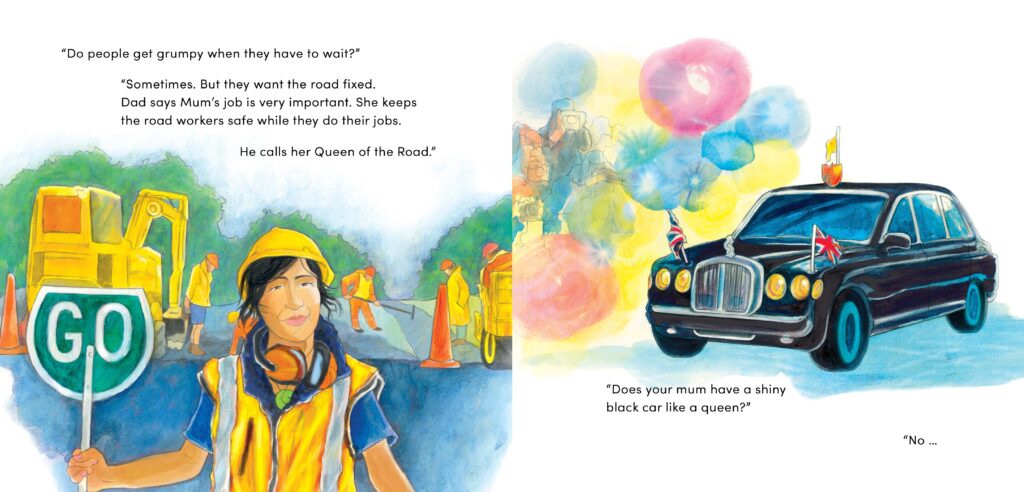
The illustrations (Lisa Allen: The Wetter The Better, Ooey Gooey Surprise) are bright and captivating. There are some great within-book references, like a kowhaiwhai-patterned blanket that is used as a baby blanket in one illustration and then as a snuggly blanket for kids watching TV in another, as well as some clever nods to the ‘queen’ theme, like a sceptre in place of the stop-sign handle on the front cover, and the picture of the mother holding pūhā with some perfectly placed colourful bags in the background that give the impression that she’s holding a bouquet of flowers.
It’s also fantastic to see a book covering a woman doing manual labour. The story doesn’t have an overt feminist message, and in a way that is the joy of it
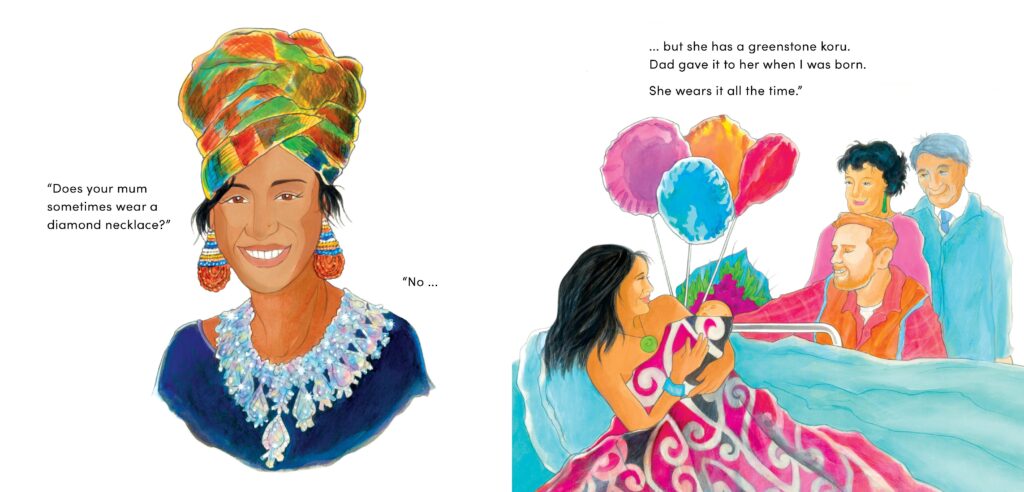
It’s also fantastic to see a book covering a woman doing manual labour. The story doesn’t have an overt feminist message, and in a way that is the joy of it. The mother being a road worker is presented as just a natural part of the boy’s life. Similarly, there is a strong sense of the mother being Māori, both physically, and with the mention of pūhā, a pounamu koru being given as a birth gift, and the red, white and black kowhaiwhai blanket. But again this isn’t the point of the story, it’s just a part of it. And it’s so great to see this coming through in Aotearoa’s picture book market. Recommended.
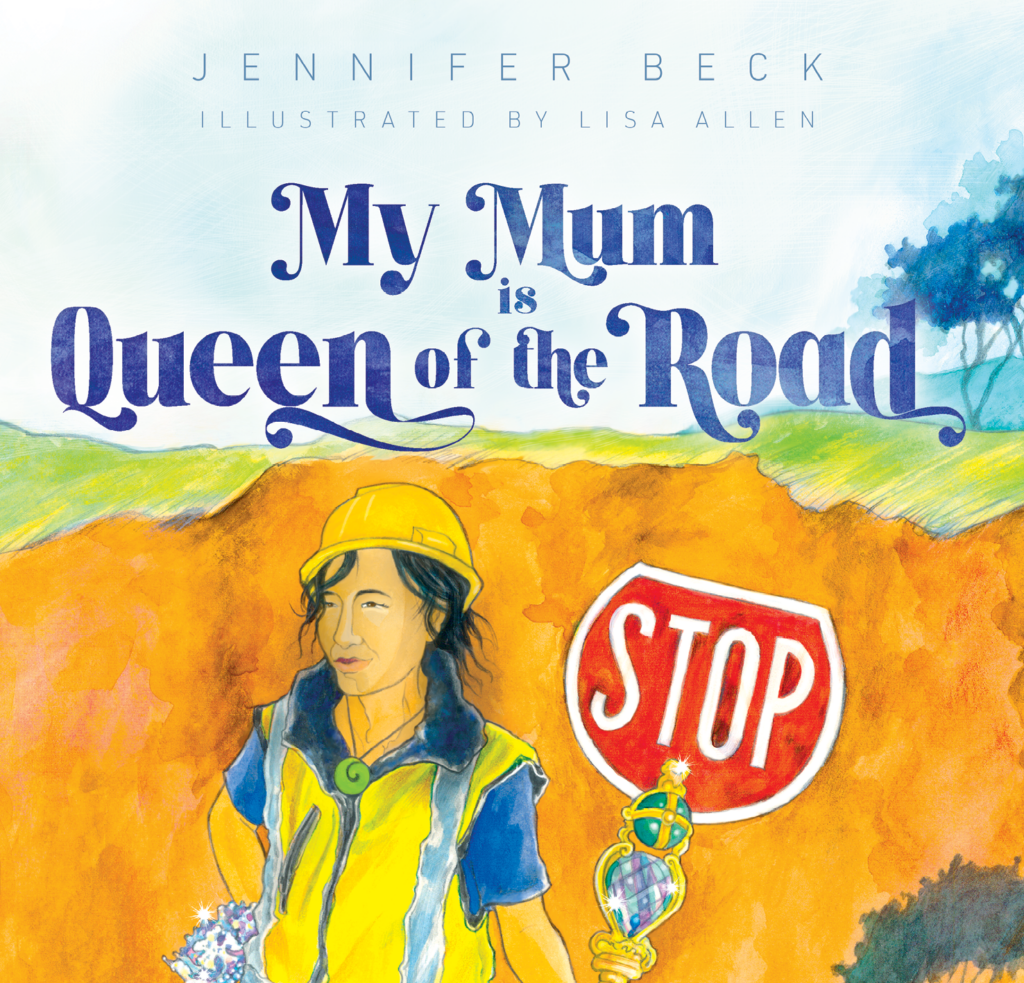
My Mum is the Queen of the Road
Written by Jennifer Beck
Illustrated by Lisa Allen
Published by Huia
RRP: $22.00
The Cats of Pāia Street by Amiria Stirling & Sarah Illingworth
The Cats of Pāia Street started life as a manuscript called Ngā Ngeru o te Tiriti o Pāia, which won the Storylines Te Kahurangi Kāterina Te Heikōkō Mataira Award in 2020. This award is for a manuscript in te reo Māori.
I mention this first because my overriding feeling when reading this book was that the rhyme and rhythm didn’t scan super well. I was surprised, because Huia publish some pretty high-quality books (including My Mum is the Queen of the Road). However, I think what the text might be suffering from is translation difficulties. It is hard enough to translate a book in prose, let alone one where you have to do justice to the poetic features as well as the words. There isn’t a translator noted, which I presume means that the author, Amiria Stirling (Te Whānau-ā-Apanui, Ngāti Porou, Kāi Tahu), has done it herself. Which is even more impressive really.
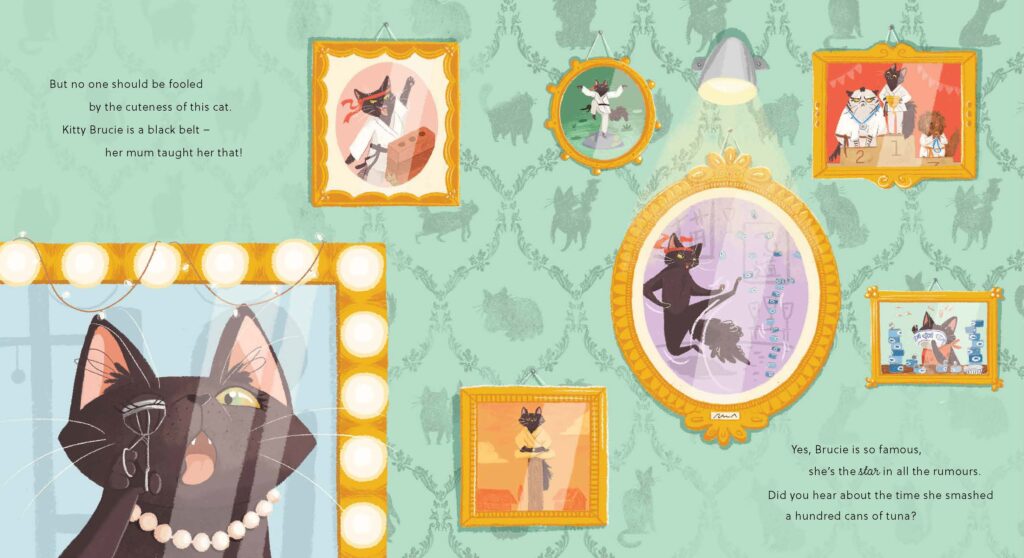
The story is split into three sections: one about Brucie the cat (wears lipstick but is also a black belt!), one about Brucie and Wolfie the dog (who miaows), and the final one where the two of them meet Naki, the new cat on the block. Naki and Brucie hit it off and walk away into the sunset together. I do feel a bit sorry for Wolfie, who is a little forgotten in this ending, leaving his storyline feeling slightly unfinished, although Sarah Illingworth, the illustrator, has thoughtfully included Wolfie on the final page looking happy for the newly loved-up couple.
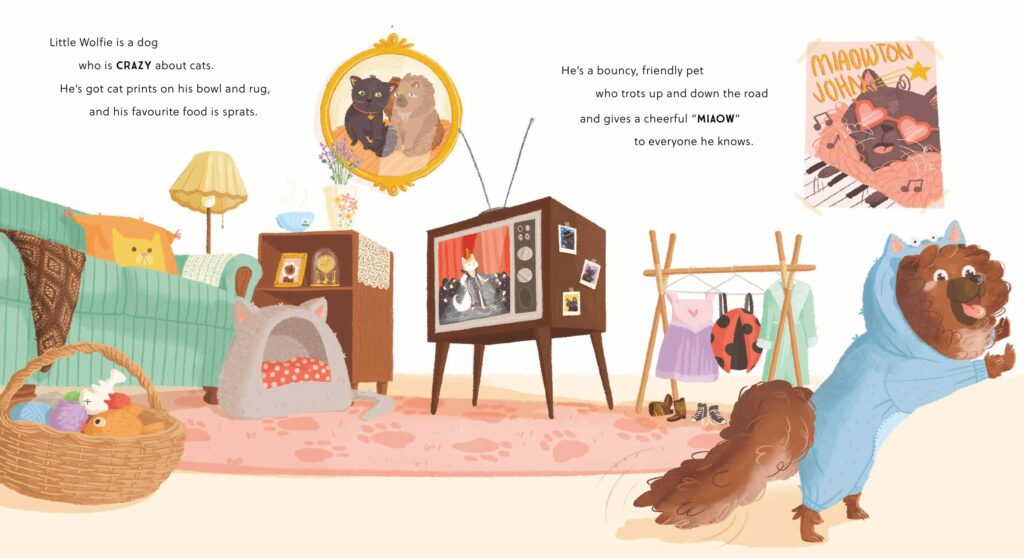
Speaking of Sarah Illingworth, I have to give special mention to the cool illustrations at the start of each section, which have hand-drawn lettering to introduce each cat’s name. It’s not a usual thing in a picture book but these illustrations make it work really well.
The book isn’t something that will blow you away. But hopefully it’s the start of a trend towards more children’s books being translated from Māori into English rather than just the other way around, and more support for Māori authors in the children’s literature space.
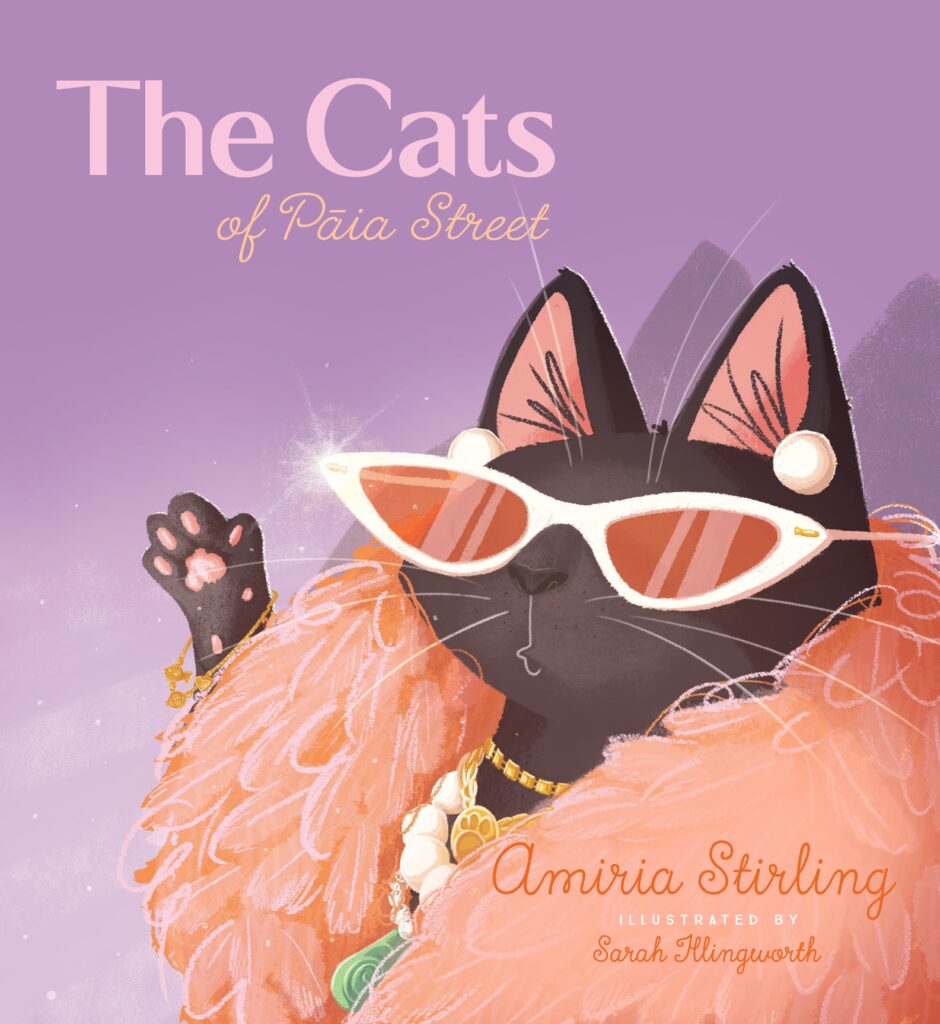
The Cats of Pāia Street
Written by Amiria Stirling
Illustrated by Sarah Illingworth
Published by Huia
RRP: $20.00
Beautiful by Becky Kemps
Now, I’m not the most experienced children’s book reviewer out there. But I’m going to go out on a limb and say that I don’t think many copies of review books come wrapped in pretty glitter paper with a hand-written note, and I suspect that this is the way that Becky Kemps sends out every copy of the book. As a self-published author, Kemps is able to add details (like sparkly packaging and a little worksheet based on the story) to her offering in a way that mainstream publishers would never do. It makes for a delightful surprise.
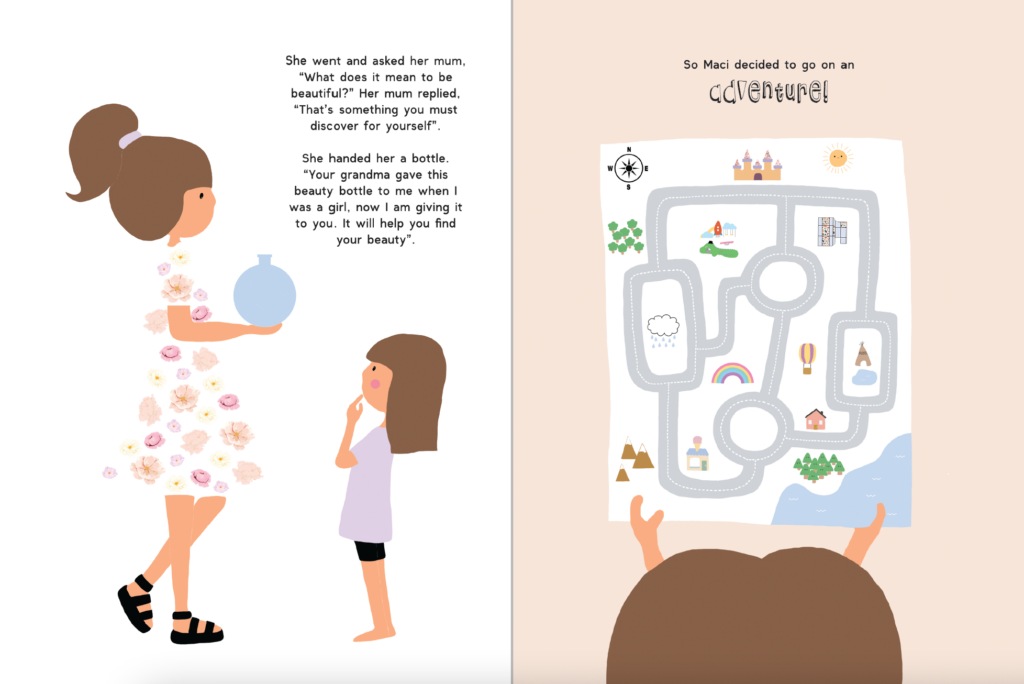
The story itself centres on the idea of a young girl called Maci trying to discover what beauty is by going on an adventure with a bottle that fills up as Maci sees beautiful things on her journey. The bottle fills up much more when Maci sees acts of kindness than when she sees traditionally beautiful things like princesses and fashion models. The message is a bit heavy-handed, particularly for an adult reader. But the final page is a lovely lift-the-flap where Maci is illustrated with the contents of the beauty bottle inside her heart, and who can resist a surprise lift-the-flap with such a heartwarming message?
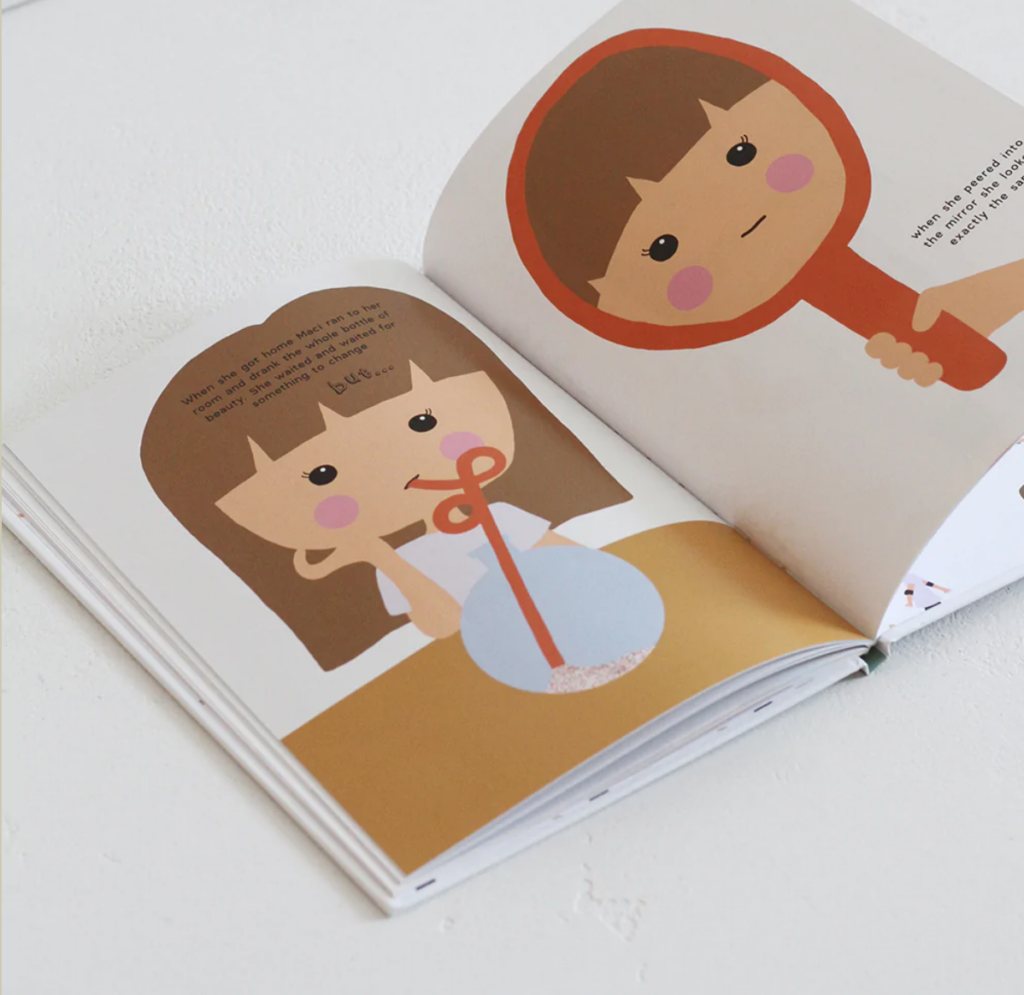
As a self-published book, there are some errors that would have been picked up by a good editor (some slightly clumsy sentences, missing punctuation, and one spelling mistake). It also wavers between fantasy (princesses and unicorns) and reality (helping little old ladies with their shopping, icecreams falling off cones) in a way that can feel a little incohesive. However, it is great to see the growing self-publication market in Aotearoa, especially with the added touches that a self-published author can bring to the marketing and distribution of a book. Glitter paper for the win!
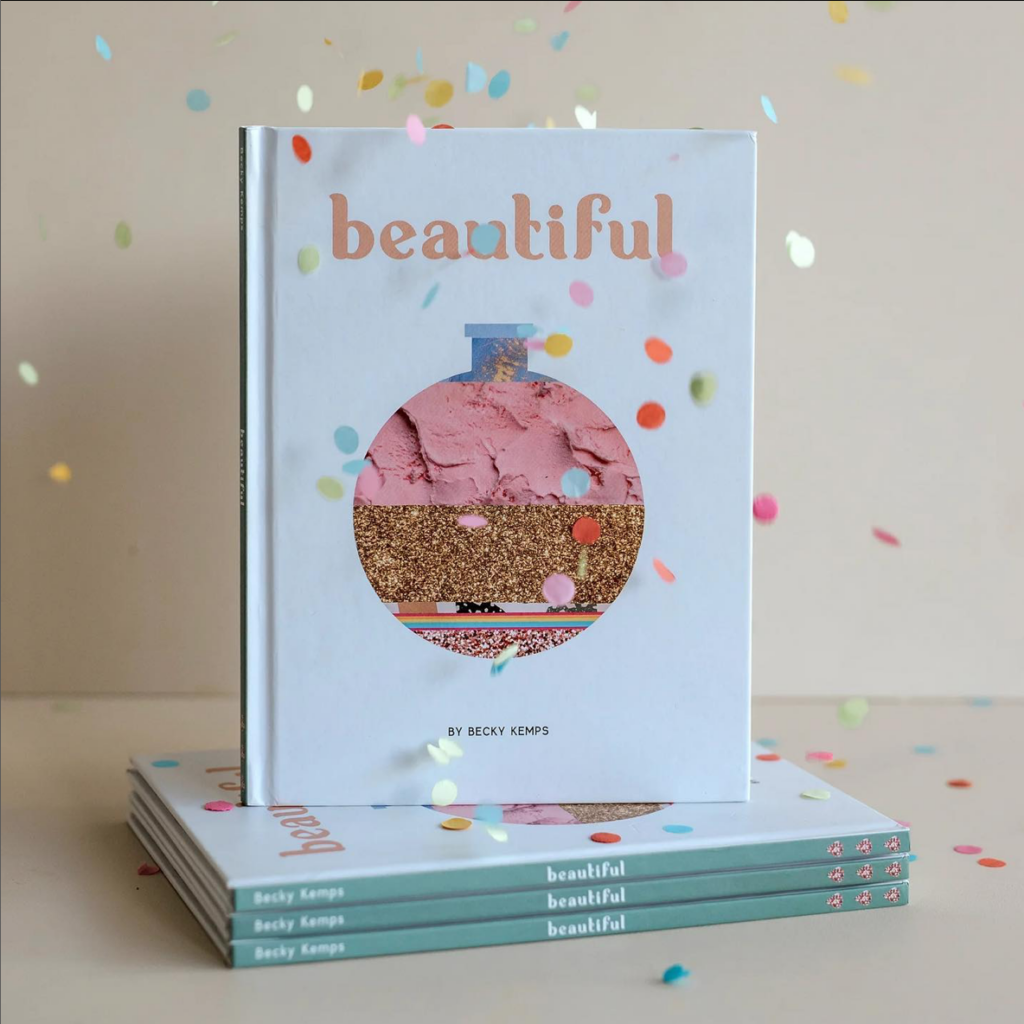
The Grandmothers of Pikitea Street/Ngā Kuia o te Tiriti o Pikitea by Renisa Viraj Maki & Nikki Slade Robinson
The Grandmothers of Pikitea Street/Ngā Kuia o te Tiriti o Pikitea (hereafter referred to as Grandmothers/Kuia) is a bilingual Māori-English book. It’s great to see more and more books being published in this way over the last few years. This means publishing companies don’t have to publish two separate editions of the same book, as well as giving more Māori language exposure to people who kōrero Pākehā.
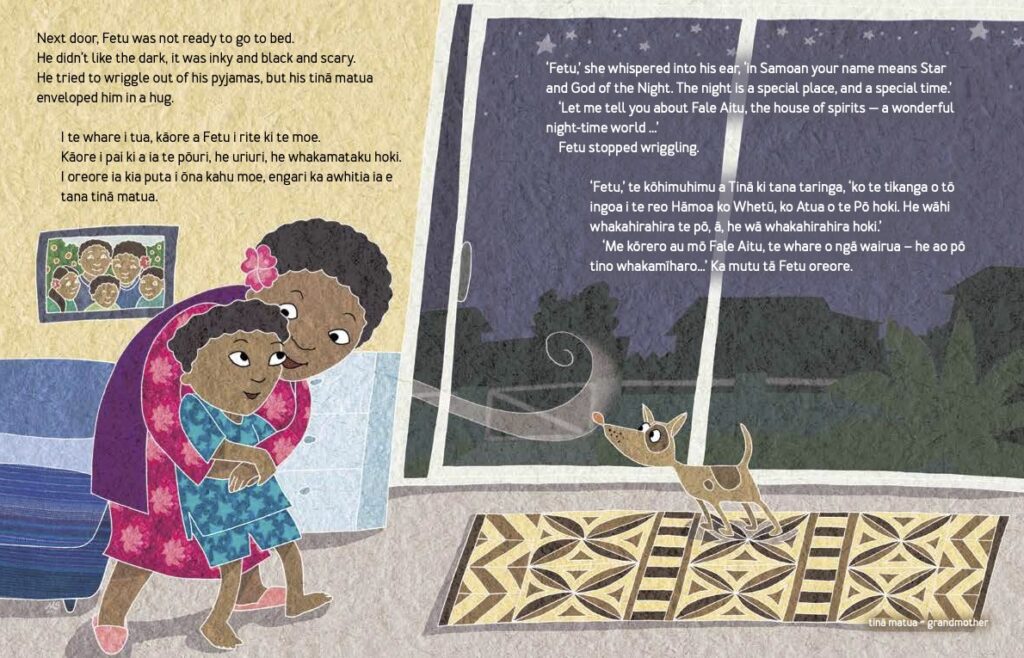
This choice seems particularly perfect for Grandmothers/Kuia, because the story is about cultural diversity. Each grandmother on Te Tiriri o Pikitea prepares a cultural dish for their grandchild to put in their lunchbox the next day. Then, while the children are at school, the grandmothers get together themselves for a shared lunch (and, I presume, a chinwag).
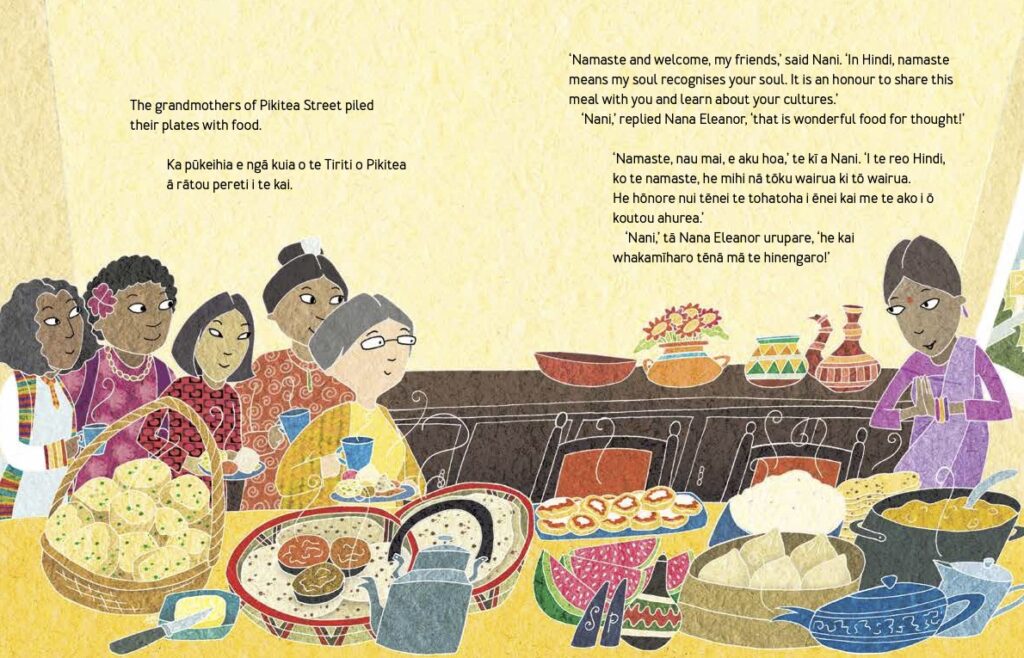
The author, Renisa Viraj Maki, has done her research. The grandmothers are named in their own languages (Nani, Kui, Tinā Matua) and each prepares a classic cultural dish (injera, dumplings, scones). Each interaction between a grandmother and grandchild also includes a relevant cultural story or reference point. A lot of cultural information has been packed into one small picture book and this does come across as somewhat didactic for the adult reader.
It also makes it quite wordy, and, given that each page has the text in both Māori and English, quite visually text heavy. Fortunately, illustrator Nikki Slade Robinson has done a stellar job of illustrations that are visually interesting but not too detailed or busy, so that on most pages the text has room to breathe. It helps that she’s done all her linework in white (a relatively unusual choice) and the text has been typeset in black, which I think is really helpful in keeping the pages from becoming visually overwhelming.
Increasing the diversity of author voices in Aotearoa is really important
Continuing the theme of “it’s great to see…”, Viraj Maki is an Indian immigrant. Despite the number of people in Aotearoa who whakapapa to India, there are precious few who are published authors. Increasing the diversity of author voices in Aotearoa is really important. Just as Grandmothers/Kuia shows, Aotearoa is a multi-ethnic, culturally diverse society. For a long time, our picture books and their authors haven’t reflected that. This is hopefully the start of a new trend in picture book authorship.
A teaching resource for this book is available here.
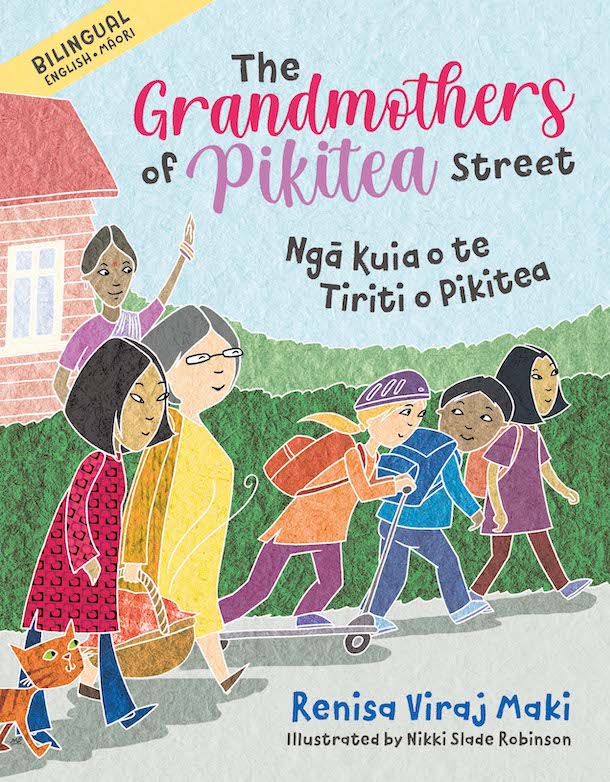
The Grandmothers of Pikitea Street | Ngā Kuia o te Tiriti o Pikitea
Written by Renisa Viraj Maki
Illustrated by Nikki Slade Robinson
Published by Oratia
RRP: $22.99
Tide’s Out/Tai Timu by Frances Plumpton & Stephanie Thatcher
Another fully bilingual book, but this one on the other end of the wordiness spectrum. It is for the most part a relatively simple counting book for younger children. It’s based around what you might find at low tide on a beach—shells, crabs and so on. Each page has a number and a short descriptive sentence about the items.
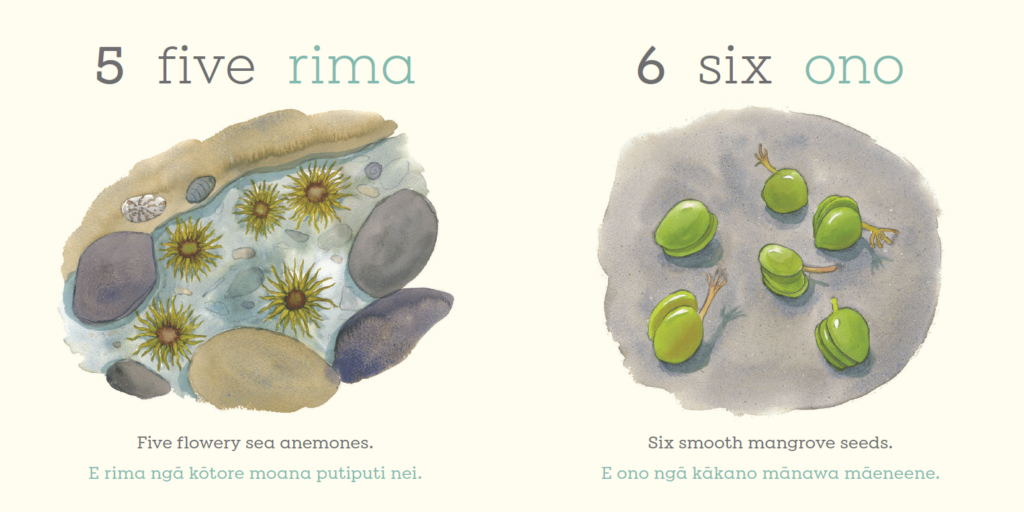
This is not “just” a counting book though. Thought has gone into almost every aspect of it. There are a couple of pages that create a little introduction, and a page at the end to round it off. Each of the descriptive sentences is alliterative without feeling overworked. “Six smooth mangrove seeds” is just one example. This makes sense, because author Frances Plumpton is an ex-librarian and a well-known literary agent. If anyone knows what makes a book “work,” it is surely her.
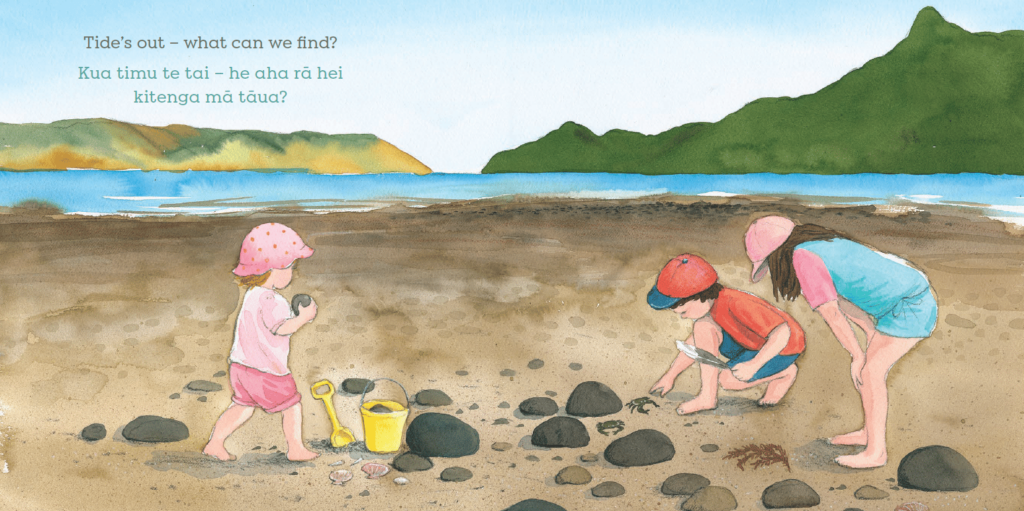
But what truly lifts this book up beyond even just a good counting book is the illustration and layout. It was originally a book of photographs made for Plumpton’s grandchildren, but photographs simply wouldn’t give the simplistic beauty to this book that illustrator Stephanie Thatcher (Great Galloping Galoot, Pūtangitangi Walks) does with her choice of gentle colours and detailed illustrations. And this is well-supported by the typesetting, which isn’t something you might usually write about in a review, but I have to note that the two languages are set in two different colours, which makes the text easy to read in either language (or both!), and is also centred on the pages which adds a certain class to the overall look. (For the real nerds among you, it’s also typeset in a slab serif, which is unusual, but it looks great here.)
For younger readers this is one that I can definitely see becoming a classic.
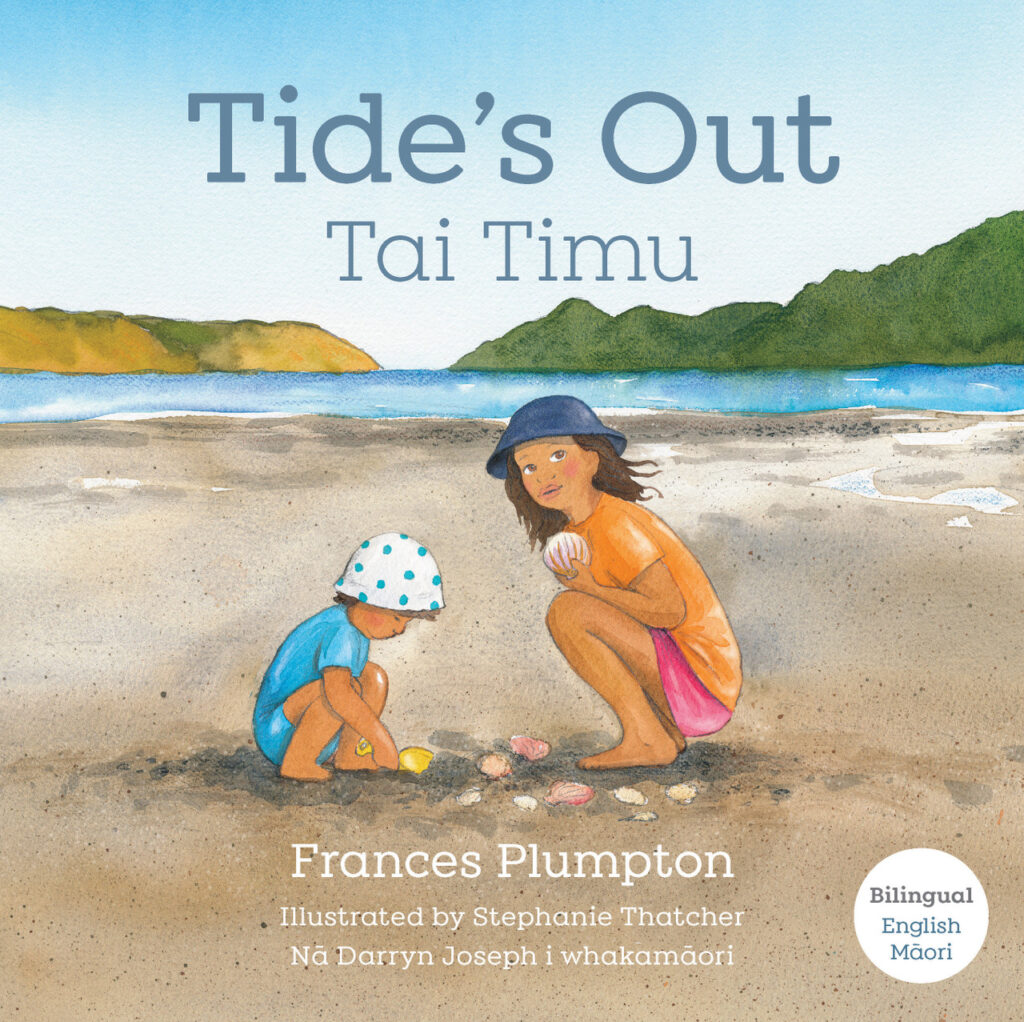
Tide’s Out | Tai Timu
Written by Frances Plumpton
Illustrated by Stephanie Thatcher
Nā Darryn Joseph i whakamāori
RRP: $20.00




